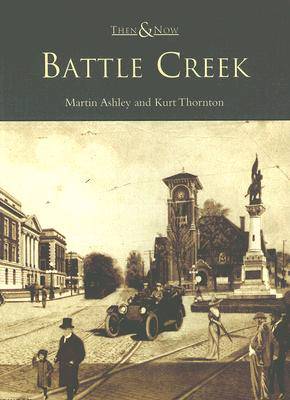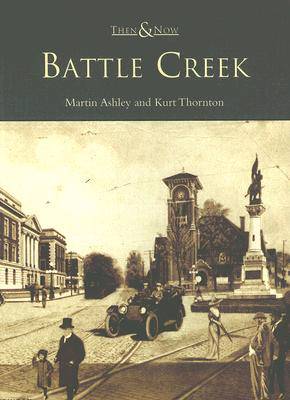
- Afhalen na 1 uur in een winkel met voorraad
- Gratis thuislevering in België vanaf € 30
- Ruim aanbod met 7 miljoen producten
- Afhalen na 1 uur in een winkel met voorraad
- Gratis thuislevering in België vanaf € 30
- Ruim aanbod met 7 miljoen producten
Zoeken
Omschrijving
In 1825, the opening of the Erie Canal triggered a migration of pioneer families from America's East Coast to the Michigan territory. By 1836, entrepreneurs had dug a mill race and platted a village that would eventually become Battle Creek. The town was first known as a farm implement center for the Midwest, then became the Health City (for its connection to the Seventh-day Adventist Church and Dr. J. H. Kellogg's Battle Creek Sanitarium), and eventually became known as the Cereal City, because it was the birthplace of ready-to-eat breakfast foods. By pairing archival and modern photographs, this book documents how Battle Creek advanced from a small settlement to a thriving community. This comparative perspective reveals many changes and advancements in Battle Creek's physical and cultural landscape.
Specificaties
Betrokkenen
- Auteur(s):
- Uitgeverij:
Inhoud
- Aantal bladzijden:
- 96
- Taal:
- Engels
- Reeks:
Eigenschappen
- Productcode (EAN):
- 9780738539768
- Verschijningsdatum:
- 9/11/2005
- Uitvoering:
- Paperback
- Formaat:
- Trade paperback (VS)
- Afmetingen:
- 173 mm x 235 mm
- Gewicht:
- 285 g

Alleen bij Standaard Boekhandel
+ 69 punten op je klantenkaart van Standaard Boekhandel
Beoordelingen
We publiceren alleen reviews die voldoen aan de voorwaarden voor reviews. Bekijk onze voorwaarden voor reviews.











